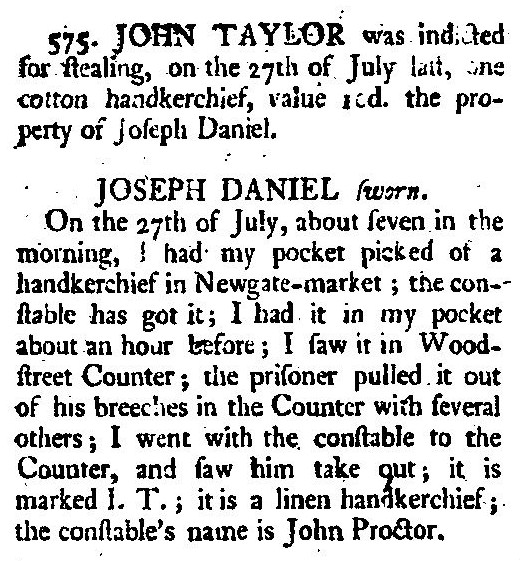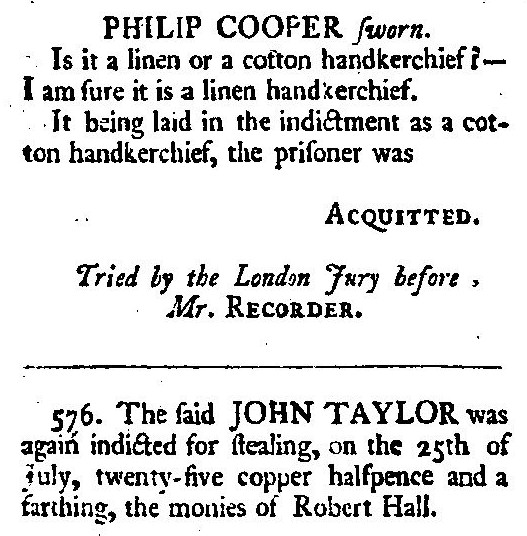JANE GORDON
JANE GORDON
[plus 2 daughters]
Jane GORDON
Birth: 1763 [actually 1766] in Inverness, SCOTLAND
Tried 27 Sep 1789 at Inverness, Scotland
Was a prisoner in Tollbooth of Inverness.Rec # 72/1811 RGD 36 (roll 36/1)
Sentenced to Life transportation
Arrived Sydney 7 Oct 1792 on the Royal Admiral
Arrived Norfolk Island on the “Pitt”
Left Norfolk Is. 3 Sep 1808 on the “City ofEdinburgh”
Arrived Hobart2 Oct 1808
Death: 11 Dec 1838 in Back River, New Norfolk, Tasmania
Husband
ADAM GORDON
Wife
MARY MCKENZIE
1. JANET GORDON
Christening: 07 DEC 1766 Inverness,Inverness,Scotland
2. ANNE GORDON
Christening: 18 AUG 1775 Inverness,Inverness,Scotland
ADAM GORDON
Spouse: MARY MATHEWSON Marriage: 30 NOV 1764 Inverness,Inverness,Scotland
Inverness Sept 1789 – 7 yrs. – Royal Admiral 1 – arrives 7th Oct 1792 – according to 1811 muster
The Royal Admiral left England for Port Jackson on 30 May 1792. She was carrying both men and women convicts, along with soldiers who formed part of the NSW Corps. Also on board were the first of wives of convicts to travel to a new life in Australia with their husbands and a few government contractors. Among them were – Mr and Mrs John Jamieson – Superintendent of Convicts. Mr and Mrs Peat – Master Carpenter. Thomas Allen – Master Miller.
The first of the female convicts boarded at Gravesend. on 4 May 1792, with the last of the female convicts on the 13 May 1792. A total of 49 women convicts embarked on the Royal Admiral with 2 deaths – Sarah Thomas and Mary Springate – thus 47 disembarked at Sydney Cove (The Convict Ships 1787 – 1868, Charles Bateson). The log notes 51 female convicts embarking the ship at Gravesends from 4 May to 13 May 13. The log records 297 male convicts embarking on the Ship all at Gravesend.
The number of women (free, convict’s wives and convicts) show inconsistency.
The convicts – both male and female mixed together on the voyage,
as there are many entries in the log referring to “The soldiers under arms and all convicts on deck”.
However there is no mention of the passengers onboard.
On board the Royal Admiral all passengers (free and convict) experienced fever and sickness.
Log of the Royal Admiral – Saturday July 28th 1792 Sick List – 9 seaman, 39 male convicts and 2 female convicts.
The Royal Admiral arrived on its maiden to Australian on Sunday October 7 1792, landing the first of her convicts on the following day. There were a total of 47 or 49 female convicts aboard when arriving at Sydney Cove. The ship arrived with many suffering from fever and there were many deaths during the voyage and also whilst docked in Sydney Cove. There were five babies born on the voyage to Australia.
The Royal Admiral brought fever, noting the large number of deaths both in Women and children soon after arrival.
Collins refers to the arrival of the Royal Admiral – The sick, to the number of 80, were all immediately disembarked.
The remainder of her convicts were sent to be employed at Parramatta and adjoining settlements.
The log gives details of disembarkment:-
October 8 – 182 convict men and women landed.
October 9 – Remainer of convicts landed
October 25 – 22 Convicts sent on shore
Of the Convicts embarked on that ship (Royal Admiral) ten men and two women died on passage, and four children were born, one of whom died. Seventy two men, eleven women and five children have landed sick (Phillip to Dundas HRNSW).
Between Oct. 1792 and Oct. 1795 what happens?
Barrington writes giving his impression of Parramatta as he disembarked. He writes:
“The convicts houses form a line in front, at some distance, they have a small garden, and those who have been industrious, seem very comfortable. I proceeded through the different gangs of people at their respective occupations, and found them more attentive to their businesses and respectful of those over them than I could possibly have imagined. Some were employed in making bricks and tiles, others building store-houses, huts, &c., a great number clearing the grounds, bringing in timber, and making roads. Others at their different callings, such as smiths, gardeners, coopers, shoemakers, tailors, bakers, attendants on the sick, &c.”
But an account by George Thompson, which was published in 1794, does not omit any of the true conditions out at Toongabbie.
“About four miles from this place (Parramatta), is another settlement, Toongabby, where the greatest number of convicts are, and work very hard, (there is also a good crop of corn standing and promises well) their hours for work are from five in the morning till eleven, they then leave off off till two in the afternoon, and work from that time till sunset. They are allowed no breakfast hour, because they seldom have anything to eat. Their labor is felling trees, digging up the stumps, rooting up the shrubs and grass, turning up the ground with spades or hoes, and carrying the timber to convenient places. From the heat of the sun, the short allowance of provisions and the ill-treatment they receive from a set of merciless wretches (most of their own description) who are the superintendents, their lives are truly miserable. At night, they are placed in a hut, fourteen, sixteen or eighteen together (with a woman, whose duty it is to keep it clean, and to provide victuals for the men when at work), without the comfort of either beds or blankets, unless they take them from the ship they came out in, or rich enough to purchase them when they come on shore. They have neither bowl, plate, spoon, nor knife, but what they can make of the green wood of the country, only one small iron pot being allowed to dress their poor allocation of meat, rice, &c; in short, all the necessary conveniences of life they are strangers to, and suffer everything they could dread in their sentence of transportation.
The women have a more comfortable life than the men; those who are not fortunate enough to be selected for wives, (which every officer, settler, and soldier is entitled to, and few are without) are made hut-keepers; those who are not dignified with this office, are made to make shirts, frocks, trowsers, &c, for the men, at a certain number per day; occasionally to pick grass in the fields, and for a very slight offence are kept constantly at work the same as the men.”
GIRL born ?
[which might explain missing years when she didn’t have a partner – unlike most others]
Arrived Norfolk Island on the “Pitt” on 31st Oct 1795 or before
Where she meets Daniel Taylor – he’s been there for 4 years
Who is Daniel Taylor?
First fleet convicts: both eliminated
Third fleet convicts: all eliminated except
TAYLOR John London 7 stays on N.I. till 1813
John Taylor tried Old Bailey April 1788 says 1811 list
I can’t find this in Old Bailey April 1788
Ahh but the reference also gives Sept. 1789 as an alternate
And here he is: the second and third trials of the day on 9th Sept.




The Proceedings of the Old Bailey Ref: t17890909-2
http://www.oldbaileyonline.org/images.jsp?doc=178909090005
John Taylor arrives N.I. -/9/1791
Why the name Daniel?
Because there is another John Taylor on the island from Aug. 1792 maybe? [till Mar 1793]
– or a Jos Taylor since 1790
Anyway: Jane meets Dan Taylor on N.I.
Married Daniel Taylor [St. Phillip’s records]
TAYLOR, John 1794 Nov 19
On list of all grants & leases of land registered in the Colonial Secretary’s Office (Fiche 3267; 9/2731 p.36)
This may be our John
OCT 1795 – OCT 1807 WHAT HAPPENS?
She has two children:
GIRL born ???– or possibly earlier in Sydney to unknown father
MARY born 1799 on N.I. to John Taylor [born when Jane was 37?]
Jane travels to V.D.L. as a single plus two children
[same boat as Scattergood][listed as Jano Gordon]
He stays on N.I. till 1813
Possible explanation: he wants to stay – she wants to go – so:
Or the relationship has already broken down
As she is listed as Gordon, not Taylor it seems likely the relationship with Taylor had broken down
Jane GORDON no land 1 2 Class 0
If Jane wasn’t already with William Scattergood by the time they got on the boat she was very probably with him by the time they got off
she marries Scattergood in 1811 [ so was she divorced from John Taylor?] –or never married in the first place? – Taylor is still alive on N.I. in March 6th 1811 . With the assumption that he, like everybody else, would end up in VDL bigamy would be a bit obvious.
I lose him after this – there are many Taylors in VDL but none seems to be this guy.


